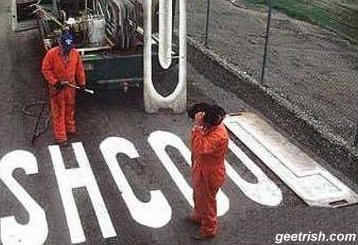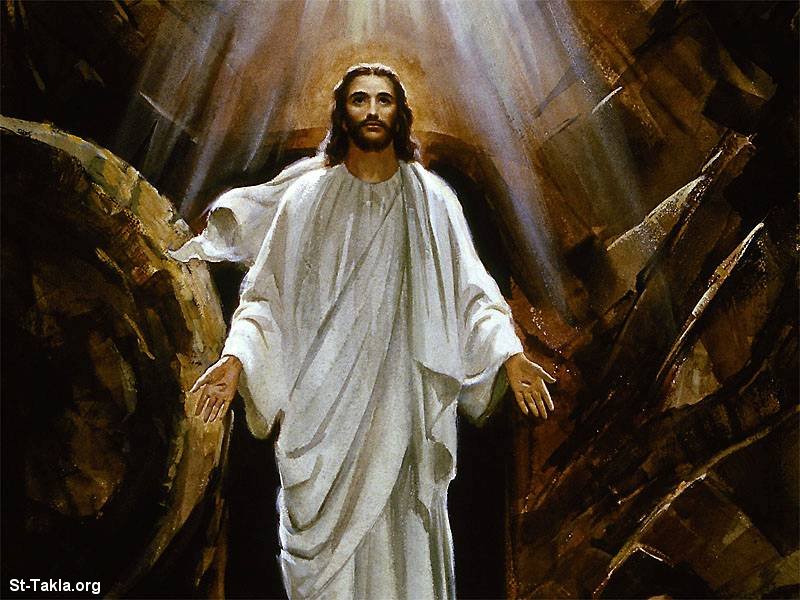To hear the audio show that corresponds to this article, click here.
Evidence for the Resurrection of Christ (Part 5 of 5)
“Negative Evidence”
By: Pastor Brian Chilton
Football is by far my favorite sport. Being an avid weightlifter, I love watching the power of the men on the football field as they seek to work together for a common cause. Football teams are comprised of two squads (three if you count special teams): offense and defense. The offensive squad seeks to score points for the team. The defensive squad seeks to keep the other team from scoring. Apologetics is much the same.
In apologetics, two methods are used: positive apologetics and polemics (or negative apologetics). Positive apologetics seeks to show the reasons why a person should believe in Christianity, whereas polemics seeks to show how other alternatives or worldviews are false. The first four articles in this series have employed the use of positive apologetics when concerning the resurrection of Jesus Christ. However, this fifth article will use polemics to defend the resurrection against the false alternatives that have been posited by critics of the faith. Let us now examine the negative evidence, or seeking to disprove the false alternatives, of the resurrection of Jesus Christ. Before we do so, let us consider some points that most, if not all, reputable New Testament scholars (liberal and evangelical) accept as valid.

Facts that Must Be Considered
Before we examine the false alternatives, we must first remind the reader of five fundamental truths held by most, if not all, reputable New Testament scholars.
(A) The Historicity of Jesus of Nazareth
Although some online would like for the reader to think that evidence suggests that Jesus never existed, no reputable scholar would say the same. The fact is that much ancient evidence suggests Jesus’ existence: New Testament documentation, extra-biblical documentation, and early Christian sites and communities. If one were to commit his or herself to the belief that Jesus never existed, then the person would not be able to commit him or herself to the belief that any ancient person existed. Therefore, the reader would be left with no standard in knowing anything about anyone in history.
(B) The Death of Jesus on the Cross
The death of Jesus of Nazareth on the cross is a historical certainty. For the same reasons listed in (A), we find the cross a historical certainty. In addition, we also find evidence by way of archaeology to prove that crucifixions occurred exactly as the New Testament describes.
(C) The Empty Tomb
Although some would deny the validity of the empty tomb, most reputable scholars would concede the existence of the empty tomb. By empty tomb, we are referring to the fact that the disciples found the tomb of Jesus empty on Easter Sunday morning. As N.T. Wright writes,
Considering that the canonical gospels undoubtedly reflects the beliefs and hopes of the early Christians, one of the abiding surprises they present is how little they have to say about the topics of resurrection. Of course, they all end with stories of the empty tomb of Jesus…But we search in vain for extended treatments of the resurrection in the stories that purport to be about the public career of the Jesus whom the early church believed had been raised from the dead.[1]
With this in mind, we find that the empty tomb is a strong historical fact that cannot be ignored.
(D) The Transformation of the Apostles
The transformation of the apostles is something that even the most liberal skeptic would admit. Although what transformed the apostles is debated, the fact that the apostles were transformed is undeniable.
(E) The Martyrdom of the Apostles
Finally, the martyrdom of the apostles cannot be denied. Although evidence is not as strong for all the apostles’ deaths as it is for Peter, Paul, and James’, for the most part, the apostles’ martyrdom is a strong historical fact.
With these historical criteria in place, it must be explained what took place on Easter Sunday morning. Something happened that transformed the early Christians. If the resurrection is not accepted, then something must explain the transformation. But what? Let us now examine these alternatives. Hopefully, the reader will find that the only alternative that works is that which the early church has confessed all along: that Jesus of Nazareth literally resurrected from the dead on Easter Sunday morning.
False Alternative #1: Swoon Theory

The first false alternative is called the “Swoon Theory.” The Swoon Theory holds that Jesus did not actually die on the cross. Those who adhere to this alternative believe that Jesus simply passed out and was placed in the tomb. After three days, the herbs used in burial revitalized the wounded Jesus and He appeared to the disciples on Sunday morning.
This sounds ridiculous from the outset especially when we understand the nature of crucifixion. Jesus was scourged before being crucified. Ancient historians tell us that most did not survive the scourgings. A flagrum, a three-pronged whip filled with bones, nails, and glass, shredded the skin of the victim. Historians tell us that many times the internal organs were exposed after this brutal beating. Afterwards, Jesus carried a 110 pound beam to the place where the vertical beam was standing. After nailing the victim through the wrists, the horizontal beam was lifted and attached to the vertical beam. After securing the cross, the feet were nailed through with one nail securing the victim to the vertical beam.
John adds that Jesus was pierced in the side with a spear. This spear would have pierced the heart of Jesus. John writes, “But one of the soldiers pierced His side with a spear, and immediately blood and water came out.”[2] Physicians state that the “blood and water” is an accurate kind of thing. Under the distress of crucifixion, fluid would build around the pericardium sac, a sac surrounding the heart. So, if the heart was pierced, blood and fluids would be extracted from the body.
In reality, with the tortures that Jesus endured, it would be more miraculous if He had His skin shredded, nailed through His hands and feet, endured the cross for six hours, somehow managed to trick the Roman soldiers into thinking He was dead, was pierced through the heart with a spear, lay in a cold, damp, tomb for three days with no food and drink, got out of the tightly wound linen wrappings which would have included having the orifices of the body stuffed, rolled a two-ton boulder from the inside of a tomb, and walked up to the disciples proclaiming that He had risen. For those things to have occurred naturally, this would be a greater miracle than for God to have raised Jesus from the dead. The Swoon Theory itself swoons from the lack of lack of logic and an uber-dependency upon naturalism.
Problems with: B, D, and E
False Alternative #2: Stolen Body Theory

Some leave the spectrum of the cross and look towards conspiracy to describe the events of Easter Sunday morning. Some hold that Jesus did die, but that the disciples stole Jesus’ body and falsely proclaimed that Jesus had risen from the dead. The early Jewish authorities used this to describe what occurred. Matthew writes, “When they had assembled with the elders and consulted together, they gave a large sum of money to the soldiers, 13 saying, “Tell them, ‘His disciples came at night and stole Him away while we slept.’ 14 And if this comes to the governor’s ears, we will appease him and make you secure.”[3]
Several problems exist with this view. First, how would the disciples make it past the armed Roman guard? A guard consisted of 8 to 16 highly-skilled, armed Roman soldiers. Now, how would 11 distressed, unarmored men defeat 16 armored, armed, Roman soldiers trained on the level of Green Berets? Second, as we mentioned in the last article, several problems exist with conspiracy theories and Christianity. According to J. Warner Wallace’s standards for conspiracy theories, the resurrection event does not match the standards for these conspiracy theories.[4] Third, the disciples were not expecting the Messiah to rise from the dead. The teachings of Jesus that have been preserved speak more to the Kingdom of God than that of the resurrection, although some teachings about the resurrection have been preserved. Finally, if there was some way that the disciples could get by some of the guards, do you not think that the guards would have told their fellow comrades and crushed the disciples? For all the bad of the Roman Empire, one thing was clear…the Romans were one of the toughest military regimes in history. Yet, another alternative deals with the mind. Let us look now at the “Hallucination Theory.”
Problems with: D and E
False Alternative #3: Hallucination Theory

Some view that the resurrection of Christ was nothing more than a hallucination. A hallucination is defined by Merriam-Webster dictionary as the following, “a perception of objects with no reality usually arising from disorder of the nervous system or in response to drugs.”[5] In other words, a hallucination is seeing something that is not really there. From the outset, problems pop out as one uses this as an explanation for the resurrection appearances of Christ.
First, hallucinations are internal experiences. Distressed individuals could potentially see hallucinations especially if they suffer from mental disorders such as schizophrenia. The disciples do not hold the characteristics of individuals suffering from such disorders. In addition, remember in our last article that we discussed that at least 500 people saw the risen Lord Jesus at one time. The number could go up to around 3,000 if only men were listed which seems to be the case. Hallucinations are not shared by multiple people. Hallucinations are individual experiences.
Second, the Hallucination Theory does not describe the empty tomb. If Jesus’ appearances were simply a hallucination, all the enemies of the Christian movement would be required to do would be to expose the tomb and the body of Jesus. Game over. Christianity would be dead. Everyone would know where the tomb of Joseph of Arimathea was located due to the proximity to Golgotha and the notoriety of Joseph. So, it would not have been difficult to present the body if the Hallucination Theory was correct.
Finally, the Hallucination Theory does not answer the multiple appearances to the disciples and the transformation that took place within them. Those who are grieving loved ones and claim to see their loved ones afterwards do not proclaim that the loved one had been raised from the dead. The Hallucination Theory is itself proves to be a hallucination to the naturalist. Next, let us look at a theory that seeks to do away with all the historical factors mentioned earlier in our article.
Problems with: C, D, and E.
False Alternative #4: Mythological Theory

The fourth alternative is the “Mythological Theory.” Those, such as the producers of the online video Zeitgeist, hold that story of Jesus is a myth and that the resurrection of Jesus is a blend of other mythologies. More problems exist with this theory than we have time to discuss in this article. However, we will attempt to look at a few of the problems with this theory.
First, this theory is historically irresponsible. More evidence exists for the existence of Jesus of Nazareth than for any other person in ancient history. If you were to deny the existence of Jesus of Nazareth, which the earliest gospel account (probably Mark) only dates 20 -25 years from the time of Christ (a time that would allow for many eyewitnesses to still remain alive) compared to Alexander the Great who’s earliest record was recorded 400 years after his death, then you would have to deny every other person of antiquity. The skeptic who subscribes to this theory will claim that no external evidence exists outside the Bible. However, the skeptic is flawed. Josephus describes the essentials of the life of Jesus. Clement of Rome wrote as well as other extra-biblical writers in the first century. So, the problem with the skeptic is that he or she chooses not to desire to believe in the historicity of Jesus. But, is that responsible historical scholarship? Even the fundamentalist atheist Richard Dawkins conceded in a debate with John C. Lennox that the majority of reputable scholars accept the historicity of Jesus of Nazareth.
Second, the Mythology Theory fails in thinking that the disciples expected the Messiah to rise from the dead. This is just not so. Although prophecies did exist that the Messiah would rise from the dead, those prophecies were not explicit. Jews of the first century expected a Messiah who would raise up a military revolt against Rome not a Divine Messiah preaching peace and forgiveness.
Finally, the Mythology Theory fails in its’ assumption that myths existed prior to the rise of Christianity which proclaimed a Messiah which would die and resurrect from the dead. The only contender is the pagan god Mithras. The problem with attributing the worship of Mithras to Christianity is that the worship of Mithras came after the rise of Christianity. Therefore, if there was any influence, the worshippers of Mithras were affected by Christianity instead of vice versa. So, we see that the Mythological Theory fails miserably in its’ attempt to explain the resurrection of Christ and should not be accepted by any rational person despite his or her philosophical backdrop. The next theory is more respectable than the Mythological Theory, but it still fails miserable. It is the “Mistaken Tomb Theory.”
Problems with: A, B, C, D, and E.
False Alternative #5: Misplaced Tomb Theory

The fifth alternative is that of the “Misplaced Tomb Theory.” Those who adhere to this theory believe that the women and disciples were mistaken about which tomb Jesus was buried. When they traveled to the wrong tomb, they naturally assumed that Jesus had risen. This theory is easily dismissed by two points.
First, the disciples were not assuming that the Messiah would rise from the dead. This cannot be stressed enough. It may even sound like a broken record, but it must be stressed. The disciples did not understand that Jesus would rise by their own admission. John writes even when documenting his first trip to the empty tomb, “For as yet they did not understand the Scripture, that He must rise again from the dead.”[6] So, there was a misunderstanding even from the beginning.
Second, if it was true that the women and the disciples went to the wrong tomb, all that would have occurred would be that the authorities would have pointed the masses to the correct tomb and ended Christianity before it even started to take off. Plus, this theory does not deal with the transformation of the disciples and their willingness to die for what they claimed to see. This theory is itself misplaced. The next theory is promoted by John Dominick Crossan. It is called the “Shallow Tomb Theory.”
Problems with: C, D, and E.
False Alternative #6: Shallow Tomb Theory

Some such as John Dominick Crossan, famed from the notorious Jesus Seminar, claim that Jesus’ body was placed in a shallow grave after His crucifixion. Adherents to this view believe that the body of Jesus was probably devoured by dogs or wild animals. While this was a practice in Roman times, it was not as well-practiced in Jewish society due to the taboo that Judaism placed on exposed dead bodies. Did the Romans really care what the Jews thought? Not really. But, the Roman authorities, especially Pontius Pilate, desired to keep the peace as much as possible in what was a volatile area. Several problems exist with this theory.
First, the theory negates the historicity of the empty tomb. Joseph of Arimathea was a historical character. Joseph of Arimathea is described as a member of the Sanhedrin. When the Gospel of Mark and Matthew were written, it is very likely that Joseph and many members of the Sanhedrin were still alive. Many who knew these facts could verify the historicity of Joseph of Arimathea. Therefore, if Joseph of Arimathea were not a real person, then the story of Christianity would have become unbelievable from the beginning. The empty tomb can be attributed to association with the historicity of Joseph of Arimathea. Quite frankly, the story of the empty tomb holds due to the embarrassment of the story. Consider this; the disciples were not able to give Jesus a proper burial. The only one who was able to do so was Joseph of Arimathea, a member of the very Sanhedrin that condemned Jesus in the first place.
Second, the theory does not answer the transformation of the apostles and disciples. Why would the disciples make up a story about something they were not even expecting and die for the lie that they concocted? If they were expecting a military leader, why not join up with a rebellion leader instead of continuing the story of Jesus? It makes no sense. So the “Shallow Tomb Theory” is shallow at best. Next, we find a theory based on mistaken identity.
Problems with: C, D, and E.
False Alternative #7: Mistaken Identity Theory

Some adhere to a “Mistaken Identity Theory.” In other words, some feel that Jesus was not really crucified, but someone who looked like Jesus was crucified in His place. Three problems exist with this theory.
First, this theory insults the intelligence of the Romans and the Jewish authorities. Surely, they had seen Jesus in the public square. He had been seen near the Temple. He had been seen in the countryside. He had been seen by many if not most of the people in Jerusalem. Can one really believe that the Romans and the Jewish authorities would get this wrong? The authorities wanted Jesus dead. They would not make a mistake of this magnitude. What about Judas? Some say that Judas was crucified in Jesus’ place. Is this possible? Well, yes it is possible but it is not probable. The early disciples attest to the depravity of Judas. The women were there to see Jesus crucified and so was John. This is highly unlikely and just does not fit the facts.
Second, the theory does not fit the character of Jesus. Jesus had extremely high standards. Would the disciples continue to appreciate the teachings of Jesus if He had in fact approved of treachery and deception? The theory just does not fit.
Finally, if the theory is true, what ever happened to Jesus after the deception? Why would He disappear while His disciples were being persecuted? This would not be the mark of a good leader. It would be the mark of a traitor. This again does not fit the character of Jesus. Therefore, we must proclaim that the “Mistaken Identity Theory” is simply mistaken. Finally, the most bizarre alternative of all is given. This theory classifies Jesus as an Extra-Terrestrial life-form or that Jesus was taken away by aliens.
Problems with: B, C, D, and E.
False Alternative #8: Alien Abduction Theory
Thankfully, the theory of “Alien Abduction” has not received much attention. It has not been promoted by many except for some late night radio shows and some bizarre online personalities. This theory is promoted by many who have a passion for UFOs, conspiracy theories, and aliens. Some radical conspiracy theorists believe that Jesus was abducted by aliens or that Jesus Himself was an alien and played a trick on the disciples…(rolling my eyes as I type). Really? Do we really even need to address this theory? The disciples knew that Jesus was a person. No aliens here. No spaceships. Give my regards to the big-headed, green men from planet X. One thing we can extract from this crazy theory is the ridiculous measures skeptics choose to accept instead of accepting the resurrection of Jesus of Nazareth.
Problems with: B, C, D, and E.
Conclusion:
I am an avid weightlifter. Someone told me about a man by the name of Gene Rychlak who bench-pressed over 1,000 pounds for the first time in recorded history. I thought, “There is no way that a human being could bench-press that much.” So, I examined some powerlifting sites that documented his lift. Also, some who witnessed the event recorded Rychlak’s incredible lift and posted it on YouTube. Although it was difficult to fathom, I had to accept the fact that a human being named Gene Rychlak of Pennsylvania bench-pressed half a ton because the cumulative evidence led towards that belief. 
During the course of these past five articles, we have examined the evidence for the resurrection of Jesus Christ. When you examine the cumulative evidence, it can be seen that the resurrection of Jesus Christ is a historical fact. Some may seek to refute it. But, we have seen that these refutations fail. Some will still not be able to accept the resurrection due to the implications of the resurrection. However, if that is the case, the Christian cannot be deemed delusional; the skeptic would. What will you do with the evidence? Will you embrace its’ conclusions or continue to deny its’ truth? Who will you say Jesus is? If you still reject Jesus, you had better hope you are right, because if you are not, you may be playing Russian roulette with your very soul.

Suggested Reads:
Cold-Case Christianity by J. Warner Wallace
Evidence for the Historical Jesus by Josh McDowell and Bill Wilson
I Don’t Have Enough Faith to be an Atheist by Norman Geisler and Frank Turek
New Evidence that Demands a Verdict by Josh McDowell
Reasonable Faith by William Lane Craig
The Case for the Resurrection of Jesus by Michael Licona and Gary Habermas
The Resurrection of the Son of God by N.T. Wright
The Historical Jesus by Gary Habermas
[1] N.T. Wright, The Resurrection of the Son of God (Minneapolis, MN: Fortress Press, 2003), 401.
[2] The New King James Version (Nashville: Thomas Nelson, 1982), John 19:34.
[3] The New King James Version (Nashville: Thomas Nelson, 1982), Mt 28:12–14.
[4] See chapter 7 of J. Warner Wallace’s book Cold-Case Christianity.
[5] Inc Merriam-Webster, Merriam-Webster’s Collegiate Dictionary., Eleventh ed. (Springfield, MA: Merriam-Webster, Inc., 2003).
[6] New American Standard Bible: 1995 Update (LaHabra, CA: The Lockman Foundation, 1995), John 20:9.





Hey dude. what kind of wordpress theme are you using? i want it to use on my blog too . [url=http://sacmichaelkorsmontre.webnode.fr/]michael kors[/url] michael kors